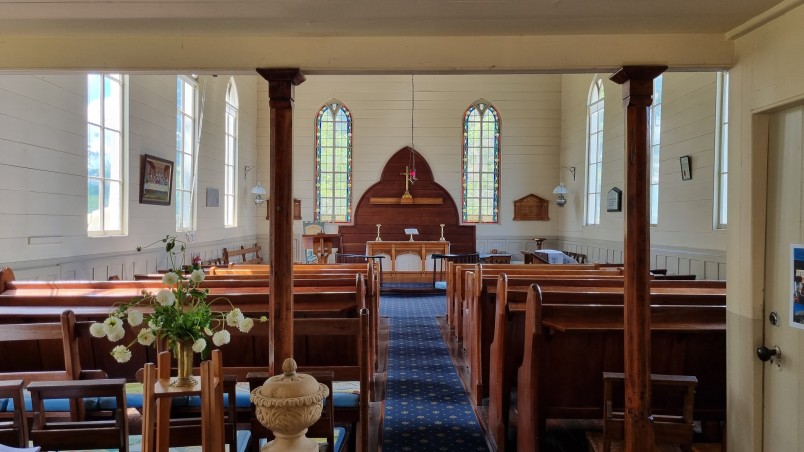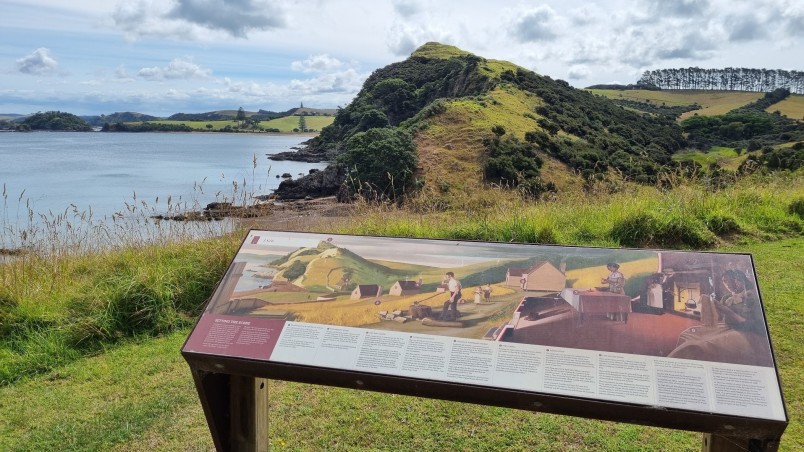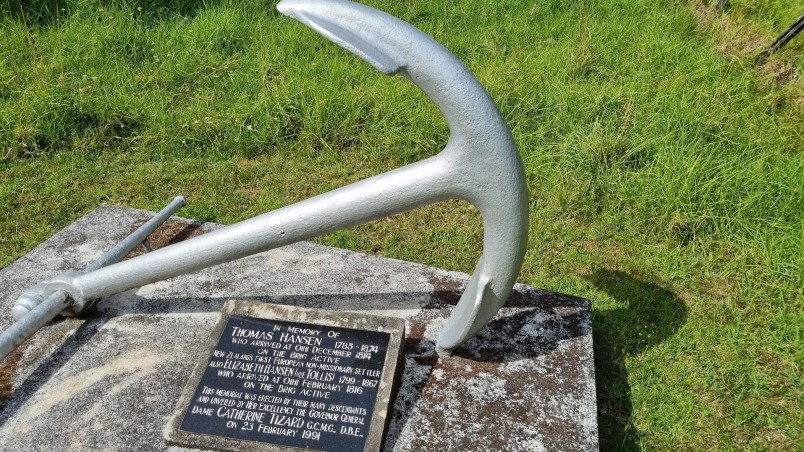Note for subscribers: I received an email from a long-time reader, Ian Froggatt. He's a local who has written a short book called Lab Leak of which he has a few dozen copies that he's happy to send out free of charge, postage paid by him. All you need to do is email him at sixpies@yahoo.com with a mailing address if that's something you'd be interested in. With Biden giving a pardon to Anthony Fauci for his gain of function research at Wuhan going all the way back to 2014, this is a rather timely topic.
For the most part, instead of emailing notes separately, I will include them at the top of article emails like this. I have an upcoming livestream with Tim Wilms from Australia next Friday. I've also done a podcast with Adnan Belushi on five years of fighting the police state. Other interviews and podcasts should resume later in February. Enjoy the summer holiday story below!
We went on a little family camping holiday up North this week in the Bay of Islands. I hadn't been there since I was a young child. Having made my own studies into New Zealand history it was quite an experience for me: history coming alive.
We pitched our tents at a nice little spot by Haruru Falls, at the end of a little inlet between Waitangi and Paihia. The Old Wharf Road is New Zealand's oldest surveyed road and was the supply route into the Hokianga. The beach there is one at which the Maori landed their canoes after fishing or raiding. The clefts in the rocks once upon a time were the burial places of chiefs.
Across the hill is Paihia and there you'll find St Paul's Anglican Church, a black stone building, which sits on the same site as the first church built by Henry Williams from raupo (bulrush) in 1823. A chapel had been built at Ohio Mission in Rangihoua prior.
You can see Russell across the Bay, and a short ferry ride takes you there, cheap and every 20 minutes. That's better service than Auckland public transport. The Hellhole of the Pacific has had a makeover since Hone Heke burned it down in the Flagstaff Rebellion. Waterfront hotels, restaurants, fancy cafés, very much the booming tourist town. The highlight is Christ Church, the oldest standing church in New Zealand. I love the classic kitset churches around the country, it always pains me to see one no longer in use, but this one is still active after 190 years. The graveyard has tombstones from the early days through to the 1940s, with a number of early settlers and Maori loyalists buried there.

Flagstaff Hill is a bit of a slog to get up, but worth it on a clear day. You can see the entire Bay of Islands with its crystal clear blue water and the Pacific Ocean stretching across the horizon. You can see the competing flagstaff at Waitangi and almost every historic site across the Bay of Islands. You can see why any competent commander would have prioritised the hill for strategic value.
We skipped Waitangi due to the $70 ($35 per adult) entry fee and went further up the coast to Kerikeri, where you'll find the Stone Store on the Mission Grounds, New Zealand's oldest stone building 1835. (Theories about ancient Celtic structures in the bush notwithstanding.) It's still doing business after all these years. Mostly it sells cheap trinkets made in China and anti-White books written by Marxist academics. That is the unfortunate reality with almost every site of historical significance and many plaques being captured by the woke infestation. One day we'll rewrite them all to be accurate.
One example of these info signs is on the Marsden Cross Track, about a 40 minute drive from Kerikeri mostly on gravel roads to a remote part on the Rangihoua Peninsula. The first land sale happened there, when the missionary settlers who landed in 1814 were forced to buy the land the mission was on by their hosts. The giving of gifts to visiting chiefs, particularly iron axes, had been inconsistent. The missionaries weren't keeping score, but Maori were. Twelve axes were demanded for the land the Oihi Church Mission occupied in the valley below Rangihoua Pā. The deal was signed and the land became the property of the Church.

Modern revisions claim Maori didn't understand the deal properly (and all subsequent ones) because private ownership and perpetual titles were foreign to them. This is "noble savage" paternalism that might better be termed "idiotic savage", because the insinuation is that Maori were dumb. In truth all their land was privately owned by the most powerful chief. They carried on perpetual utu over land lost in wars by their ancestors. Europeans were more than familiar with that type of feudalism too. Maori lacked the ability to peacefully enforce a system of land ownership, not the understanding of it. They would have understood the land was sold, but of course as it is with all people through all of history, land ownership is only as permanent as is the military power backing the claim. Maori figured trade out very quickly and knew how to strike the deals they wanted, much to the detriment of the settlers who were often left starving in those early days.
The first settler families lived there in Oihi Bay. You can stand on the spots their houses were and walk the land they walked. There are no ruins, but there are memorials built by both the descendants of the King and Hansen families plus a list of names of those buried on the hillside. There is also the remains of the first orchard to walk through. You can even go off the path and climb the pā if you're up for a challenge.
The Hansens were the fourth settler family, the first non-missionary colonists. The Kings and Hansens were the only ones who lived the rest of their days in New Zealand. The Kendalls were very influential in their decade, with Thomas producing the first book, a grammar on the Maori language, before being recalled. The Halls left due to ill health.

When you make your way out there you can see why Oihi and Rangihoua were abandoned. The economy and power bases moved quickly to less remote spots. Access to inland resources and rivers were vital. Lack of those makes it unsuitable for anything except dairy and sheep farming today, although there is a large vineyard and a shooting range on the peninsula too.
Visiting these sites in the Bay of Islands really is a must-do experience once you have an understanding of the history beyond the sanitised bits. Reading can only take you so far.
